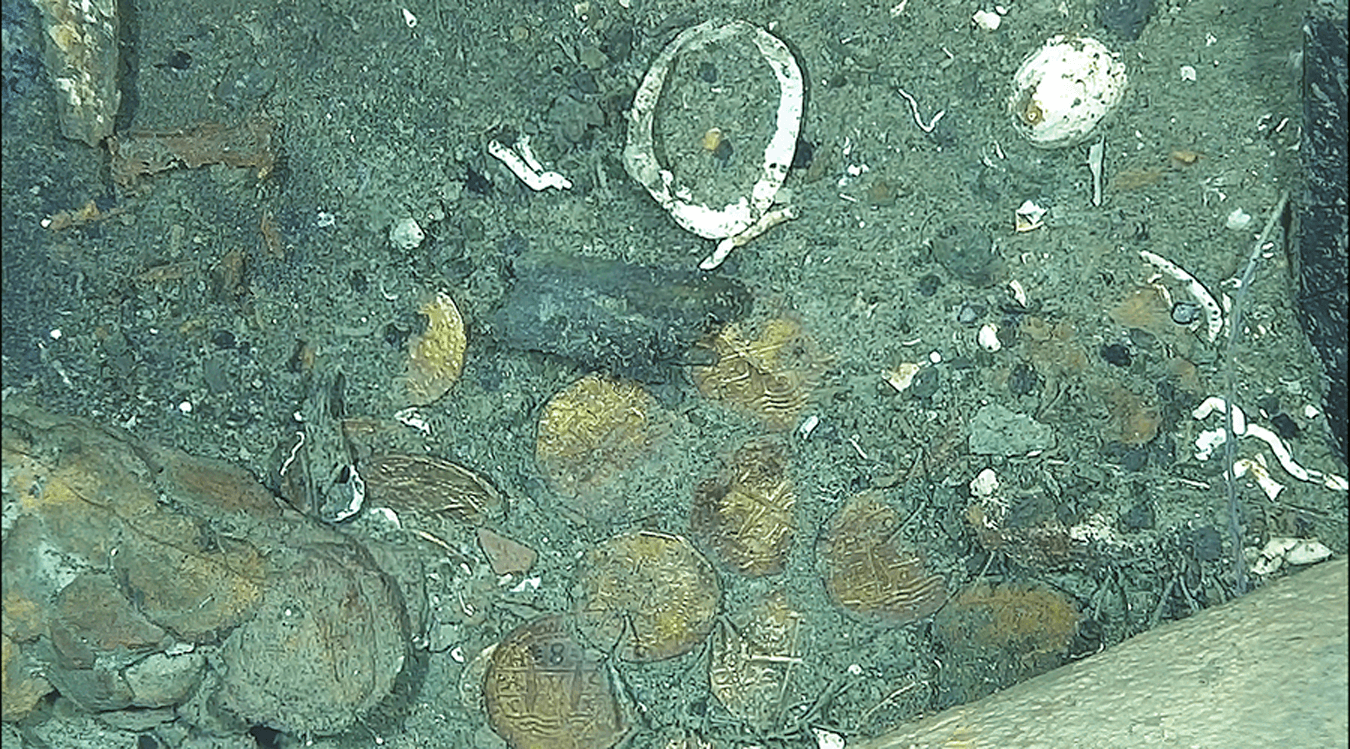Minted in Peru in 1707, the money bolsters the evidence that the wreck is the Spanish ship “San José,” which sank off the Colombian coast in 1708 with treasure worth billions on board
by Aurora Martínez – Staff Contributor
More than 300 years after the Spanish galleon San José sank off the coast of Colombia in 1708, a cluster of glittering gold coins from what’s often called the “world’s richest shipwreck” is helping archaeologists confirm the vessel’s final resting place.
In a study published in the journal Antiquity, researchers describe the “hand-struck, irregularly shaped” coins, which were found in the wreck’s stern, nearly 2,000 feet below the surface of the Caribbean Sea. Known as cobs or macuquinas, the money was minted in Lima, Peru, in 1707 and bears markings linking it to the Spanish Empire’s Tierra Firme fleet, which transported treasure from colonial South America to Europe between the mid-16th and late 18th centuries.
An international team led by the Colombian Navy and the Colombian Institute of Anthropology and History (ICANH) discovered the wreck in 2015, but researchers have long struggled to find definitive evidence linking it to the San José.
Read the full article on Smithsonian Magazine:
https://www.smithsonianmag.com/smart-news/these-gold-coins-may-solve-the-mystery-of-the-worlds-richest-shipwreck-confirming-its-identity-as-a-legendary-18th-century-galleon-180986856/
